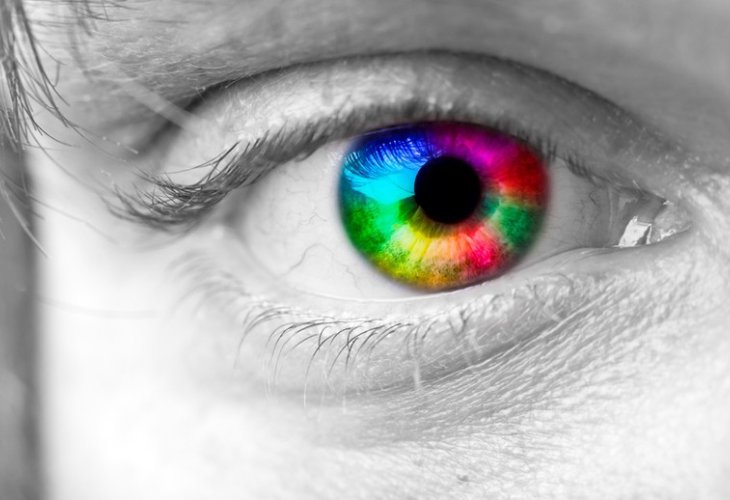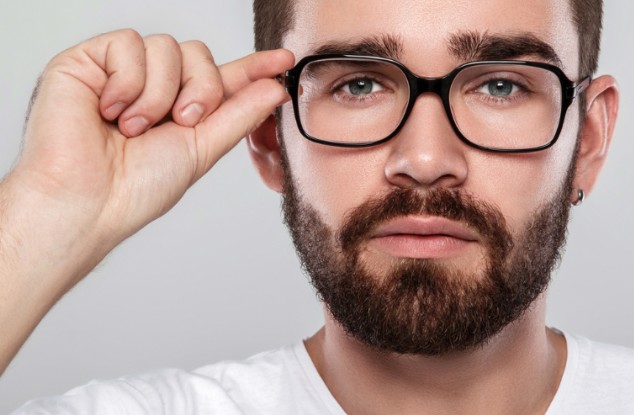Wonders of Creation
The Human Eye: Wonders of Design, Blind Spots, and Why We Need Glasses
Exploring the eye’s brilliance, and how science and design work together for clear vision
 (Photo: shutterstock)
(Photo: shutterstock)Chaim asks: "Hello. The eye is without doubt one of the greatest wonders of creation, but my friend asked me about what seem to be defects or flaws in the human eye. For example, he said that the octopus doesn’t a blind spot. He also asked why the eye doesn’t protect itself from the sun’s ultraviolet rays — why must people wear sunglasses to avoid damage? Why do diseases such as cataracts occur, causing blurred vision? And why do so many people need glasses? I’m sure there are good answers to these questions, but I’d like to know them. Thank you."
* * *
Indeed, our eye is one of the greatest wonders of creation, and a clear proof of a Creator. Even the most primitive eye in nature requires, all at once, the following components to function:
Light-sensitive cells that can send signals to the brain.
A brain capable of interpreting electrical signals, turning them into an image, and guiding action.
A concave eye structure to prevent excessive light from blinding it.
A lens to focus light waves into a sharp image.
An adjustable pupil to regulate incoming light (too much would destroy the light-sensitive cells).
A cleaning mechanism for the pupil — otherwise dust would block the light.
Each one of these is a complex system, encoded by many genes in our DNA, which only a Creator could have brought into being. Without even one of these components, the system would be entirely useless.
Even the simplest light-detecting organism points to design. How much more so the human eye, whose complexity cannot be replicated by any scientist. Despite all modern technology, it is impossible to make a biological eye, or even an organ that approaches its brilliance. The most advanced “bionic eyes” today barely perceive faint shadows.
Why the Human Eye Has a Blind Spot
The blind spot is a tiny part of the retina without light receptors, and the vision there is therefore absent. Why would humans have such a limitation?
The human retina is structured in such a way that the blind spot helps shield the eye from ultraviolet radiation. The octopus does not need this because it lives in water, which naturally filters UV light. If the octopus lived on land, it would quickly go blind.
Humans don’t notice the blind spot at all because we have binocular vision — two eyes at the front of the head. Each eye fills in the blind spot of the other, and the brain integrates the signals into a complete, seamless picture. The blind spot itself becomes invisible which points to careful design.
 (Photo: shutterstock)
(Photo: shutterstock)Why Sunglasses Are Necessary
Every type of eye in nature comes with trade-offs. For example, some animals see well at night but poorly in color. The human eye is designed to filter out most UV radiation, which is why we don’t go blind in daylight, while an octopus would. However, the eye does not block intense, prolonged UV exposure, which is the reason that sunglasses are useful.
If all UV light was blocked, our vision would always be dim, as if we were wearing sunglasses all day. The current balance allows us to see the world clearly and brightly, while still giving us the intelligence to invent protection when needed.
Cataracts: A Natural Limitation of Time
Cataracts are essentially a clouding of the eye’s lens. They are rare in young people and affect mainly those over age 60. The eye works about 16 hours per day, 448 hours per month, and by age 60 has functioned for over 322,000 hours! No machine can operate so long without some decline. Cataracts are simply a natural byproduct of time.
Even then, only a portion of older people develop them, meaning many retain clear vision their entire lives. When cataracts do occur, humanity has been given the wisdom to develop treatments like surgery and lens replacement.
 (Photo: shutterstock)
(Photo: shutterstock)Why Some People Need Glasses
Nearsightedness and farsightedness stem from natural variation in the shape of the cornea or the length of the eyeball. The average human cornea has a radius of 8 millimeters, and the average eye length is 22 millimeters, which are values perfectly suited for clear vision for most people. Natural differences however means that some eyes are too long, too short, or slightly misshaped.
If these averages were not so finely tuned, most of humanity would need very thick glasses to see at all. Instead, most people see well naturally, and only some require mild correction. The need for glasses is not a flaw, but the result of normal human diversity within a carefully set average.
Interestingly, modern life has increased the demand for glasses. Prolonged close-up work such as reading, screens, and artificial light, strains the eyes. In earlier generations, much of learning was oral rather than from books, and therefore this problem was rarer. With the printing press came books, and glasses were invented in the very same era. By Divine providence, the cure was created alongside the challenge.
A Deeper Perspective
Modern lifestyles bring health challenges: softer foods shrink jaws and cause wisdom tooth problems, while screens strain vision. Alongside these challenges, we’ve developed dentistry, optics, and medical advances. This is not coincidence but part of a planned balance, equipping humanity with tools to overcome natural limitations.
Even in weaknesses, we see deliberate design. Limitations are part of life in a temporary, physical world. They call on us to grow in resilience and creativity, while reminding us that ultimate perfection belongs to the future, when, in the Messianic era, all flaws will be healed.
"How great are Your works, O Lord; You made them all with wisdom" (Tehillim 104:24).

